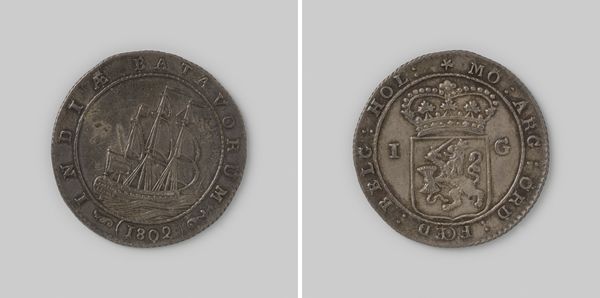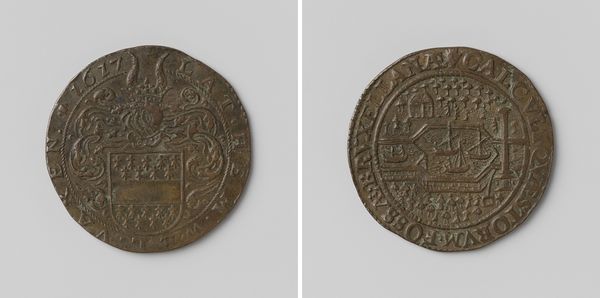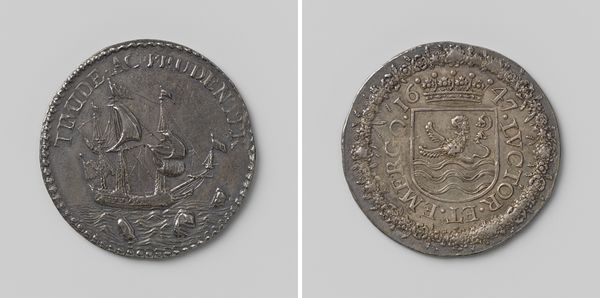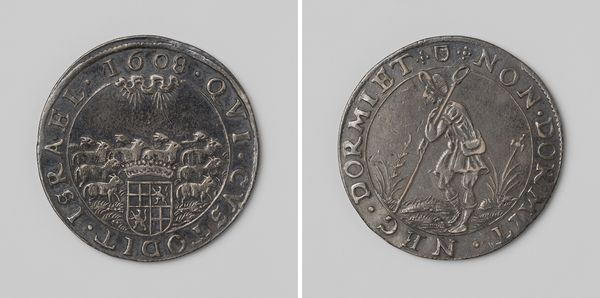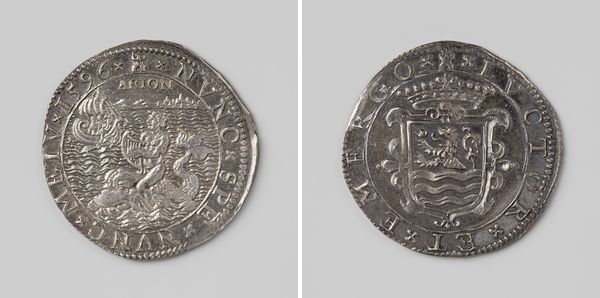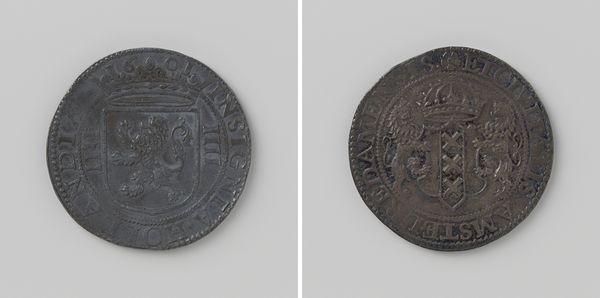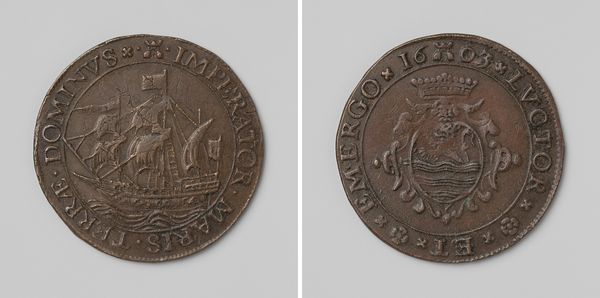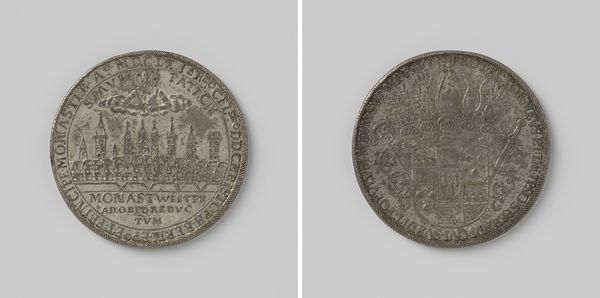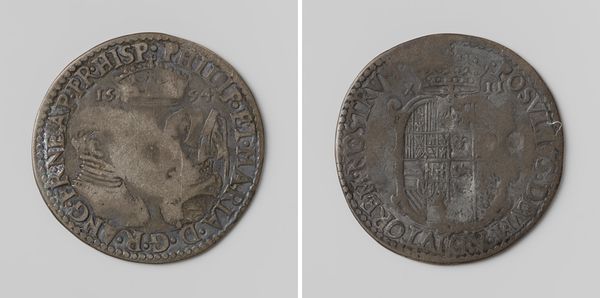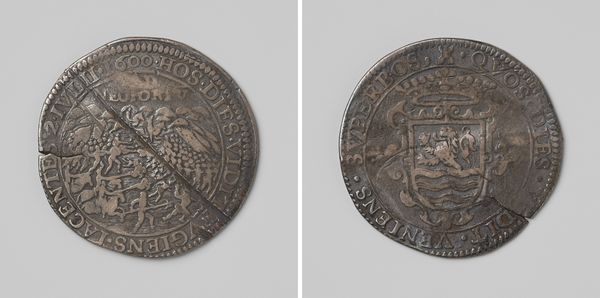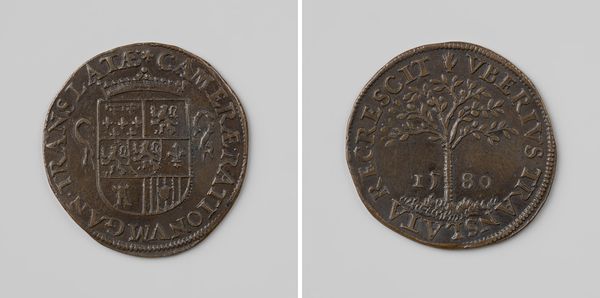
Inname van Sluis met haven en vloot, rekenpenning van de rekenkamer van Zeeland 1604
0:00
0:00
silver, print, metal, engraving
#
silver
# print
#
metal
#
landscape
#
sculptural image
#
11_renaissance
#
engraving
Dimensions: diameter 3 cm, weight 6.66 gr
Copyright: Rijks Museum: Open Domain
Editor: Here we have the “Inname van Sluis met haven en vloot, rekenpenning van de rekenkamer van Zeeland,” made around 1604. It seems to be a silver or metal coin or medallion featuring an engraved image. One side shows a battle scene and the other displays a crest of some sort. It feels almost like propaganda or a commemorative token. What historical context surrounds this piece? Curator: It's a fascinating object, isn't it? As you suggested, these types of objects served a public function. Coins like this one weren't just currency; they broadcasted political and social messages. This particular piece commemorates the capture of Sluis in 1604, a key moment in the Dutch Revolt. Editor: So, this was commissioned to celebrate a victory? How would the average person encounter it? Curator: Exactly. The ‘rekenkamer van Zeeland’ or Chamber of Accounts of Zeeland, issued it. These were distributed amongst officials, merchants, and perhaps even wealthy citizens, serving to bolster morale and legitimize the ruling powers. Think about it - how does art function to shape public perception, even today? Editor: That makes sense. It's interesting to think about this small object having such a large political purpose. Did the imagery itself carry specific symbolic weight at the time? Curator: Absolutely. Consider the detailed depiction of the battle on one side, contrasting with the structured heraldry on the other. One showcases power through victory, the other, through established authority. The combination would speak volumes to the contemporary viewer about the legitimacy and divine favour of the Dutch cause. Editor: That's a really interesting way to look at it. I was so focused on the artistry, I overlooked the strategic communication involved. Curator: Exactly! That’s the wonderful thing about studying art history; it helps us see art not just as beautiful objects, but as active agents within society.
Comments
No comments
Be the first to comment and join the conversation on the ultimate creative platform.

